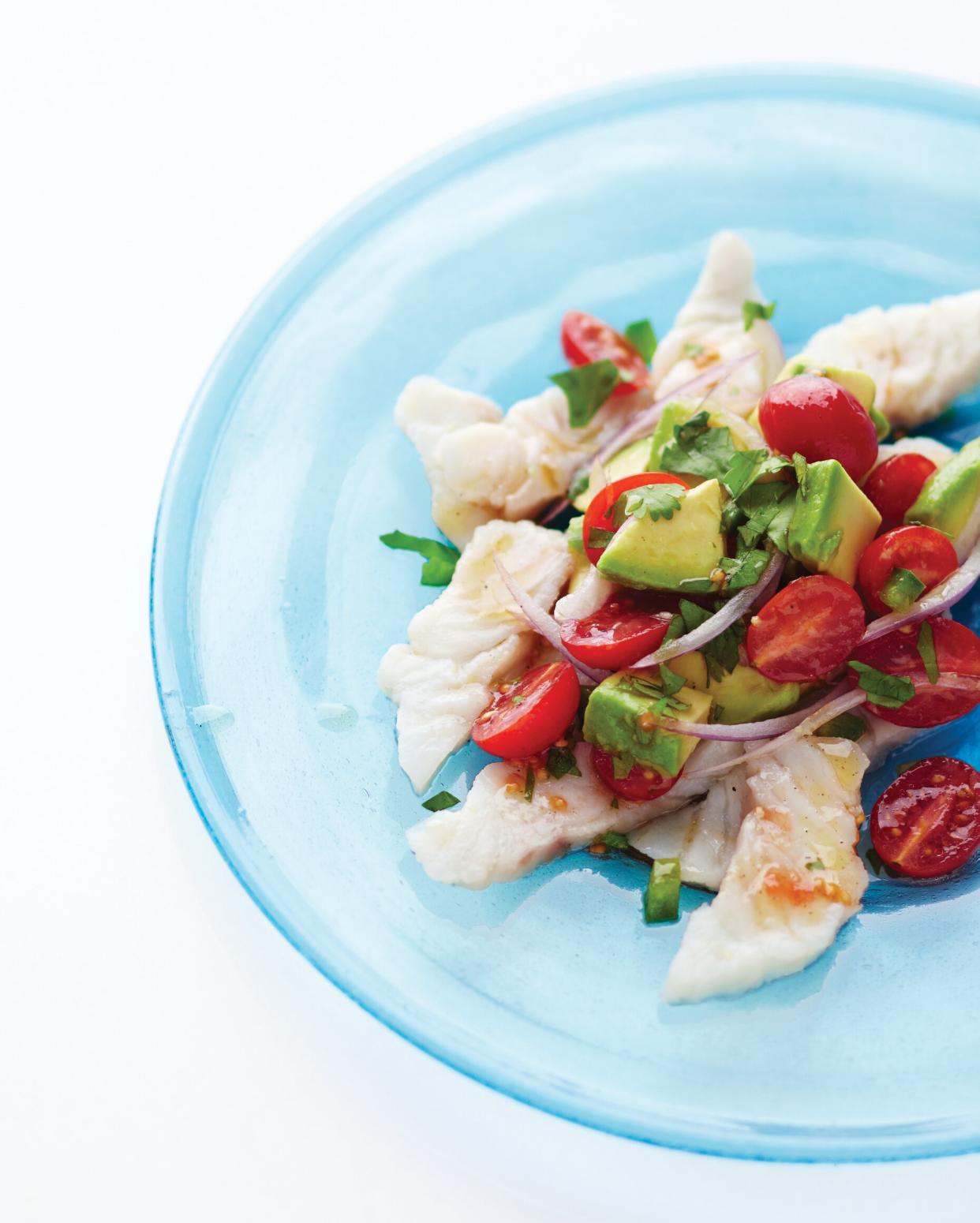Why Ceviche Is the Best No-Cook Dish to Enjoy This Summer

Johnny Miller
If you're craving a no-cook recipe to beat the summer heat, look no further than ceviche. Our recipe with red snapper, avocado, and tomatoes, pictured here, is a delicious example. As a raw fish dish that's "cooked" with citrus juice instead of heat, it's one of the best summer recipes you can make. "You don't have to heat up an oven or stove to make [ceviche]," explains says Gerardo "Gerry" Lopez, sous chef at Four Seasons Hotel Austin. It's also refreshing, simple, and delicious. In short, it's an essential addition for your no-cook summer menu.
Related: How to Shop for, Store, and Prepare Seafood
What Is Ceviche?
Ceviche is made of diced raw fish that's cured, or "cooked," in citrus juice. Often, it's associated with traditional Peruvian cuisine, but there are many variations throughout Central and South America, including Mexico, Ecuador, and Colombia. In fact, there are versions of ceviche around the world, from carpaccio in Italy to kinilaw in the Philippines.
As for the ingredients, ceviche always calls for three elements, and that's true regardless of the variation: raw fish (or another seafood), citrus juice, and seasonings. Typically, lime juice is used, but different cultural variations might use orange or lemon juice, says Lopez. From there, aromatic ingredients are often added for extra depth and flavor, like this Ceviche with Scallion and Sesame. Other examples include red onions, cilantro, garlic, and chiles, says Ann Ziata, chef and instructor at the Institute of Culinary Education. You can even use fruit for extra summery vibes, like this Ceviche with Tropical Fruit and Habanero.
The star of the show, however, is the citrus juice. Aside from adding a bright, tangy flavor, it's responsible for "cooking" the fish. Here's how it works: The acidity of citrus juice denatures (breaks down) the proteins in the fish, similar to what happens when fish is cooked with heat, shares Ziata. This makes the flesh firmer and opaquer, she says. The acids also help minimize potentially harmful microorganisms in the fish. There's just one catch, though: The raw fish in ceviche still poses a risk for foodborne illness, even with the addition of citrus fruit. People with compromised immune systems should skip ceviche, says Qi Ai, chef at Travelle at The Langham in Chicago. This includes pregnant people, young children, and older individuals.
How to Make Ceviche
The basic steps for making ceviche are the same, regardless of the origin or variation. If it's your first time making the dish, follow an existing recipe to familiarize yourself with the process.
Recipes generally follow these basic steps: Pour the citrus juice into a glass bowl, then add the diced fish. Gently toss until the fish is fully coated in juice before covering the bowl with plastic wrap and refrigerating between five minutes and four hours (depending on your desired level of rawness). From there, fold in toppings and seasonings of your choice. Serve chilled with tortilla chips, lettuce, or on its own. Once you're familiar with the process, you can experiment with different ingredients and marinating times to create your preferred refreshing ceviche.
Tips for Making Ceviche
If you're new to homemade ceviche (or raw seafood dishes in general), follow these expert-approved tips for making ceviche. First and foremost, it will sound obvious, but it's essential that you start with good quality fish. "Shop at a reputable fish market and ask for fish that's 'sashimi grade,' or [fish that is] safe to eat raw," says Ziata. Don't hesitate to tap into the vendor's expertise and ask for recommendations. Similarly, use the freshest fish you can find. A fresh fish should have clear and shiny eyes, notes Lopez. Ziata adds that it should also have a light oceanic scent. And though it might sound counterintuitive, if the fish has a strong fishy odor, leave it behind.
In general, firmer fish is a better choice when making ceviche. To avoid a mushy dish, use include sole, sea bass, flounder, mahi mahi, salmon, or shellfish like shrimp and scallops, says Ziata. And whatever fish you do choose, be sure to cut it with a sharp knife. This will also ensure the ceviche doesn't become mushy or soft. Dice the fish into equal-sized pieces. Cut the fish into equal-sized cubes to make sure everything "cooks" evenly, says Ai. And why limit yourself to one kind? Try this Shrimp and Snapper Ceviche with Tomatillos for an elegant two-in-one seafood appetizer.
According to Ziata, ceviche is safe to eat after five minutes of marinating, so be sure to track your time carefully. That being said, you can marinate for 20 to 30 minutes or longer, she says, depending on the recipe's acidity, the size of the fish pieces, and your preferred level of rawness. If you're still unsure, "taste a piece every five minutes until it's where you [want] it to be," recommends Ai. You might need to make ceviche a few times to find your sweet spot.